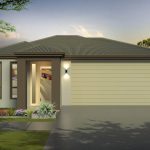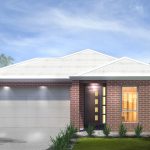New report reveals regional migration not just a pandemic solution
Despite the dominant discourse throughout the COVID-19 pandemic suggesting Australians escaped the bright city lights due to increased lockdowns and restrictions, new research has indicated this isn’t the case.
Hotspotting’s Exodus to Affordable Lifestyle report found that Australians began departing major cities in the years preceding the pandemic. Now, there are expectations for the trend to continue in the foreseeable future.
According to Hotspotting director, Terry Ryder, “Sydney has been losing population to other parts of Australia for the past 10 years and Melbourne has been losing to internal migration for five to six years.”
Conceding that COVID-19 lockdowns “made all this more visible and gave it extra momentum,” he insisted that “this trend certainly wasn’t caused by the pandemic.”
“Fundamentally, this big migration of population has been caused by the pursuit of lifestyle and affordability, enabled by technology — the ability to work remotely,” he added.
The Hotspotting report identified Queensland as the most popular destination for internal migrants, followed by South Australia, Western Australia, and Victoria.
Contrary to popular discourse, Mr Ryder explained that “there’s no statistical evidence” suggesting Australians will return to major cities.
“Apart from anything else, the notion that families who have decided to sell their homes, uproot their lives and relocate themselves and their kids to another part of Australia will casually decide to do so again so soon is unrealistic,” he said.
This trend of uprooting from city life, particularly away from Australia’s most expensive markets — Sydney, Melbourne, and Canberra — has produced an “extraordinary” result for regional property markets due to “strong demand and price growth in many areas.”
He explained that “regional markets are showing the strongest resistance to the [current] downturn trend,” a statement supported by CoreLogic research director Tim Lawless in the firm’s January Home Value Index.
Mr Lawless said, “Regional housing values are holding up better than capital city markets.”
Such conditions lead Mr Ryder to believe regional migration will continue, though he noted the focus could potentially shift from previously desirable coastal locations, such as NSW’s Byron Bay and Queensland’s Gold Coast, where unaffordability has grown, towards alternative regional markets.
“Instead, I see people making a ‘hill change’ rather than a ‘sea change,’ focusing on the same motivations such as affordability and lifestyle, but in more of a hinterland or country setting,” Mr Ryder said.
He added purchasing in regional centres can “represent a ‘win-win-win’ situation for investors: cheaper prices, higher rental yields, and good potential for price growth.”
“It’s important to choose the location well and ensure there is a strong and diverse economy creating new jobs, good transport links, and a good level of infrastructure spending, as well as affordable housing and an attractive lifestyle,” he concluded.
Hotspotting’s top five affordable lifestyle locations are:
City of Toowoomba, Queensland:
A massive infrastructure development program is placing the regional centre on the national radar, boosted by Wellcamp airport and Toowoomba’s inclusion in Brisbane’s successful 2032 Olympics bid.
“The economy of Toowoomba ($12 billion) is also the second largest in Queensland outside of the state’s metropolitan areas,” Mr Ryder said.
He also added that “the $1.6 billion Toowoomba Second Range Crossing (TSRC) is helping to cement the city as a nationally recognised intermodal transport hub.”
Further enhancing the city’s appeal are the $15 billion Inland Rail Link as well as its “attractive parks and gardens, extensive health and education facilities, and its proximity to Brisbane.”
These factors, paired with the city’s affordability (median house prices sit at around $461,000) and low vacancy rates, have drawn a myriad of buyers into the region.
Yeppoon, Queensland:
Strong sales momentum in the region occurred throughout 2021 and 2022, off the back of Yeppoon being heralded as one of the five national regions people desired to move to in 2020.
Located on the coastline north-east of Rockhampton, several projects, including an $800 million military project, the $600 million Capricorn resort, the $495 million Lower Fitzroy River Erira, and $3 billion of wind, solar, and battery farms boost the region’s standings among investors to the point where it was the second most searched area for overseas buyer searches last year, according to Mr Ryder.
The region also benefits from a diverse economy that encompasses agriculture, construction, tourism, defence, and resources as well as a construction project pipeline totalling $6 billion.
“Vacancies remain tight with typical rental yields of 4 to 5 per cent — higher than most capital cities and large Queensland seaside areas such as the Gold and Sunshine coasts,” he added.
The City of Geraldton, Western Australia:
Boasting the state’s second-largest port and simultaneously increasing populations and economy, Geraldton, four hours north of Perth, has positioned itself as a key regional centre in recent years.
A major mining centre, highly affordable homes of approximately $327,000, a proposed high-speed train to the state capital, and very low vacancy rates all play into the city’s appeal to prospective migrants.
“With growing industrial areas and other sectors providing job opportunities, properties in the Geraldton region are worthy of attention by both homebuyers and investors,” Mr Ryder said.
City of Mount Gambier, South Australia:
Rated as one of South Australia’s premier regional centres, the region offers affordable housing, lifestyle opportunities, and employment growth, while a proposed forestry industry development hub and a $120 million renewable energy plant underpin the city’s infrastructure offerings.
Despite this, Mr Ryder revealed, “There are concerns that infrastructure such as public transport and medical facilities have not kept up with the increase in population.”
“One response is a proposed $70 million expansion of the local hospital,” he said.
Though with a median house price of $365,000, rental yields exceeding 5 per cent and vacancy rates close to zero, Mr Ryder detailed that the region presents numerous potential benefits for investors and interstate migrants alike.
City of Bunbury, Western Australia:
Dubbed Western Australia’s “second capital” and boosted by its standing as the state’s southwest “commercial heart”, the region has experienced strong population growth partly due to its seaside lifestyle and affordable housing offerings.
“When combined with its major industrial estates and strong transport links to mining and agricultural regions, it makes a formidable employment node,” Mr Ryder added.
The region boasts the $278 million Bunbury Hospital Project, the $1.25 million Bunbury Outer Ring road, and the $800 million Greenbushes Lithium mine expansion.
The Summer 2022—23 edition of the Price Predictor Index has also found three of the city’s five suburbs were rising markets.
“With demand for real estate continuing to build and first home buyers heavily targeting the suburb of Australind, price growth is becoming more evident,” Mr Ryder said.
Not only that, other encouraging features for the region include “low vacancy rates and higher rental yields.”
SOURCE: Smart Property Investment By: Kyle Robbins 1/3/23







